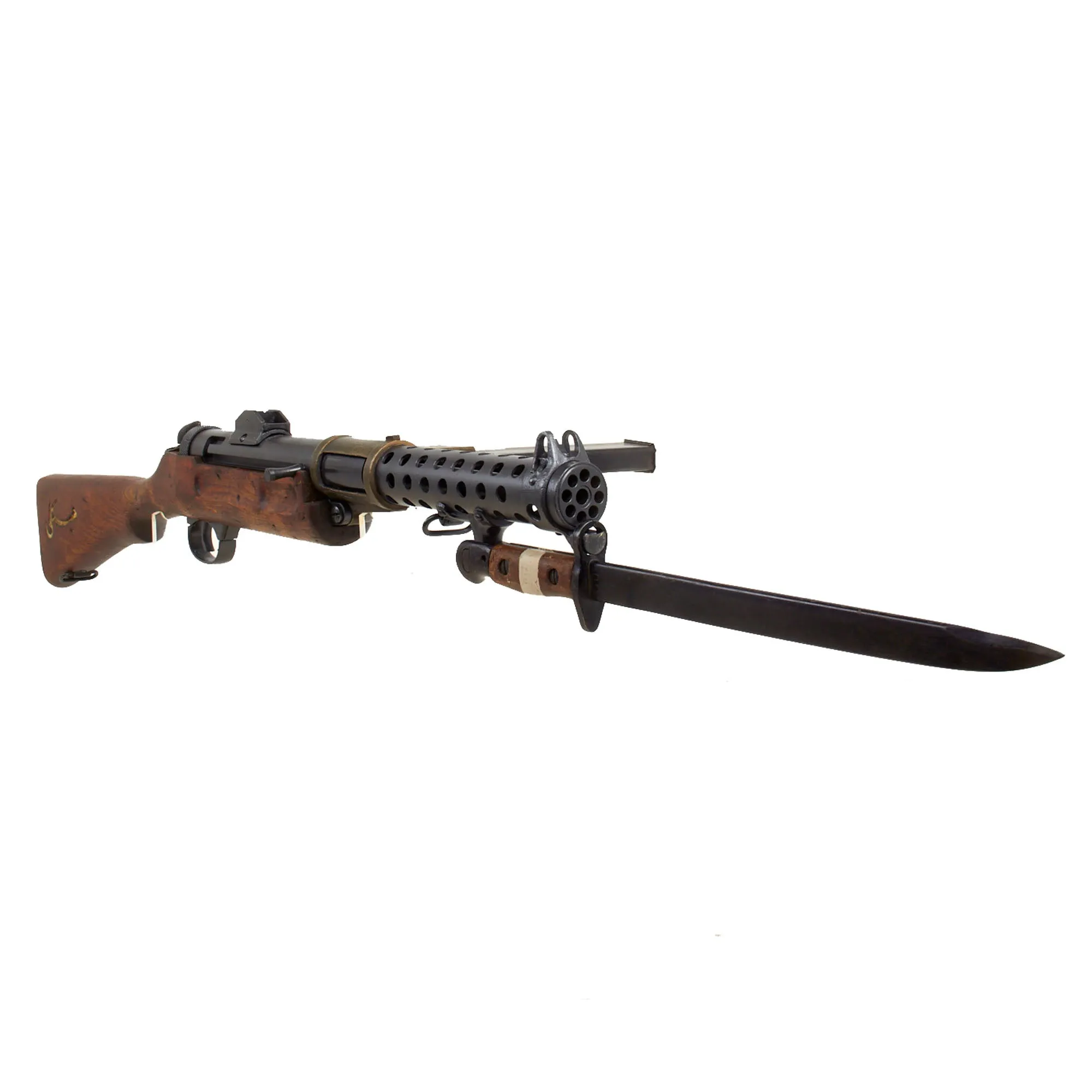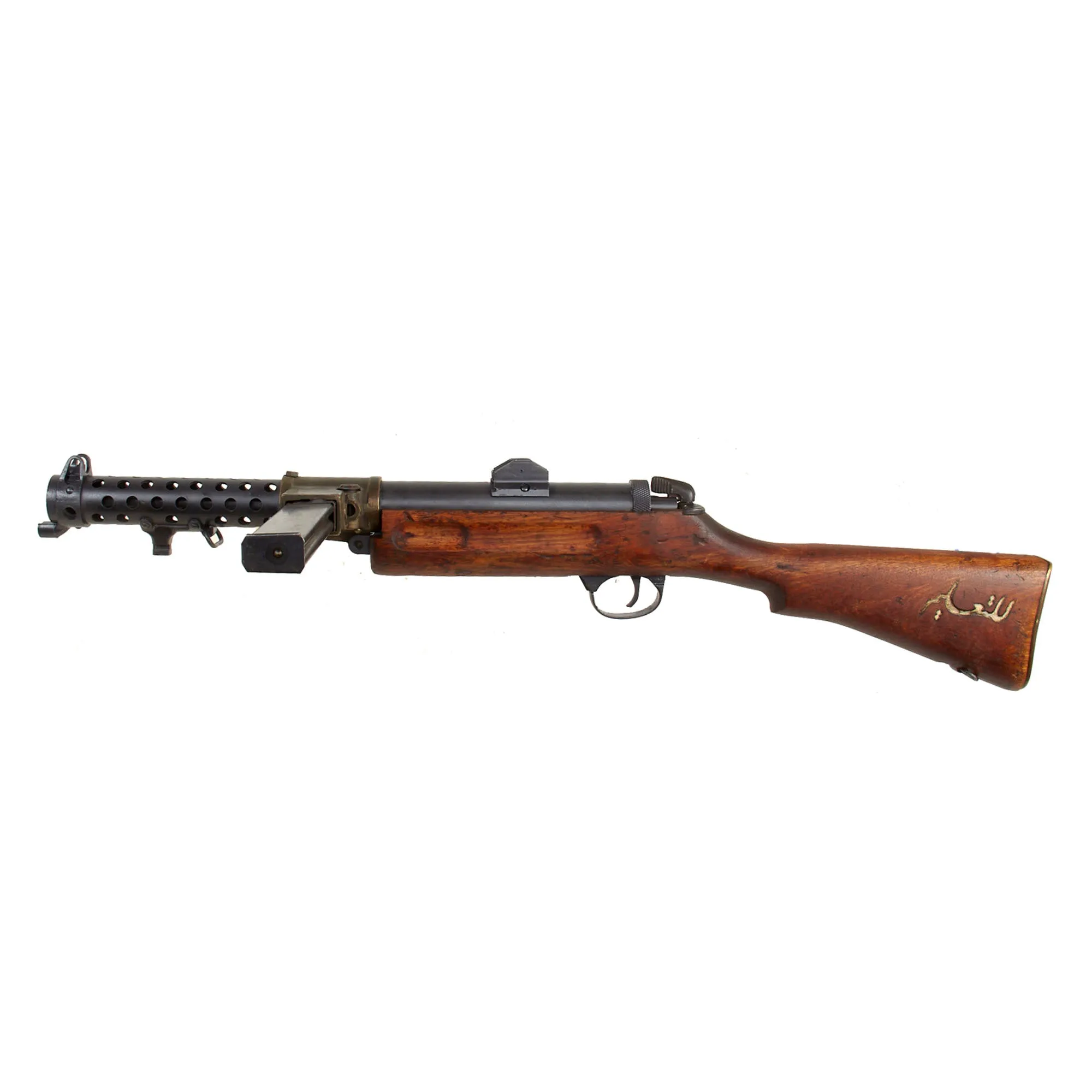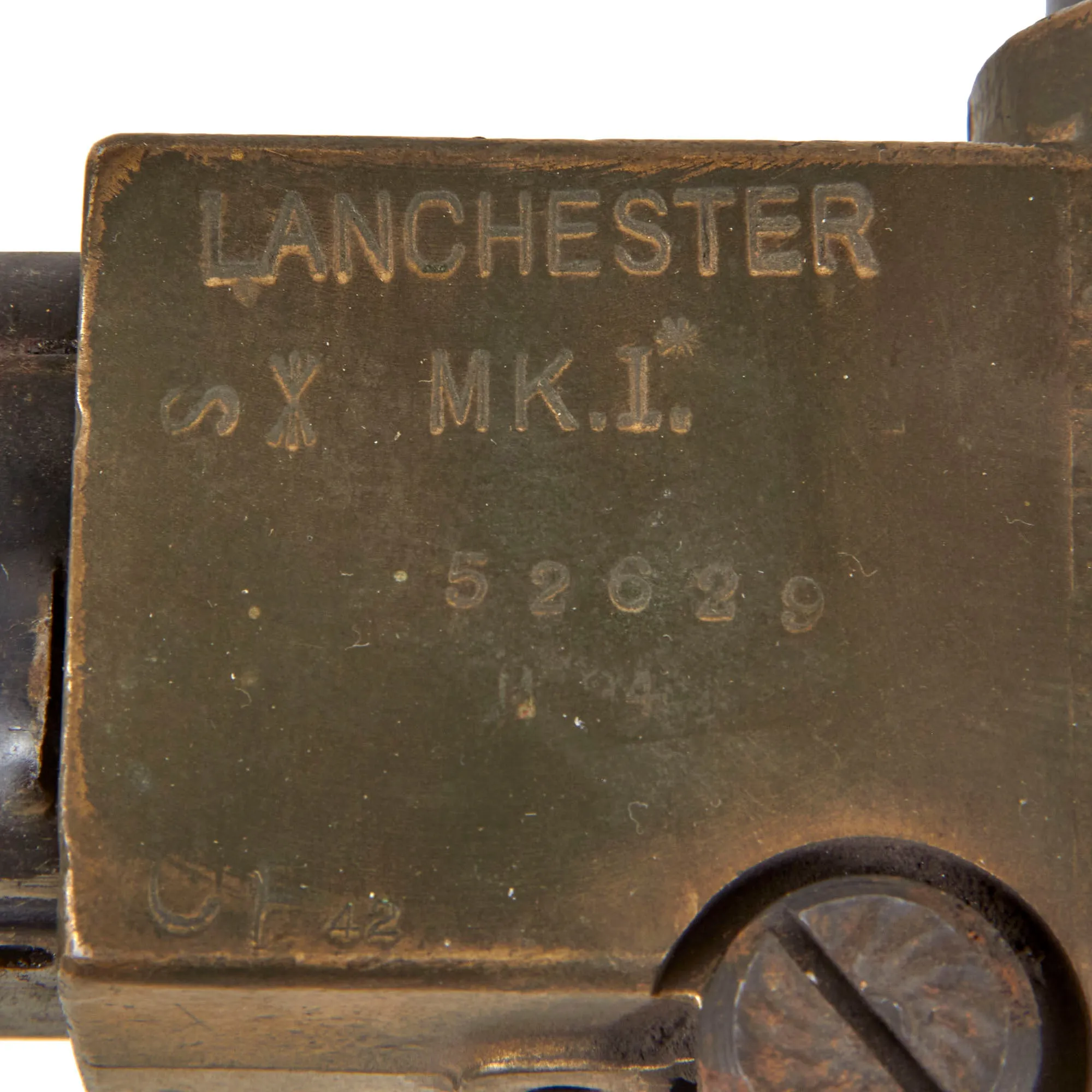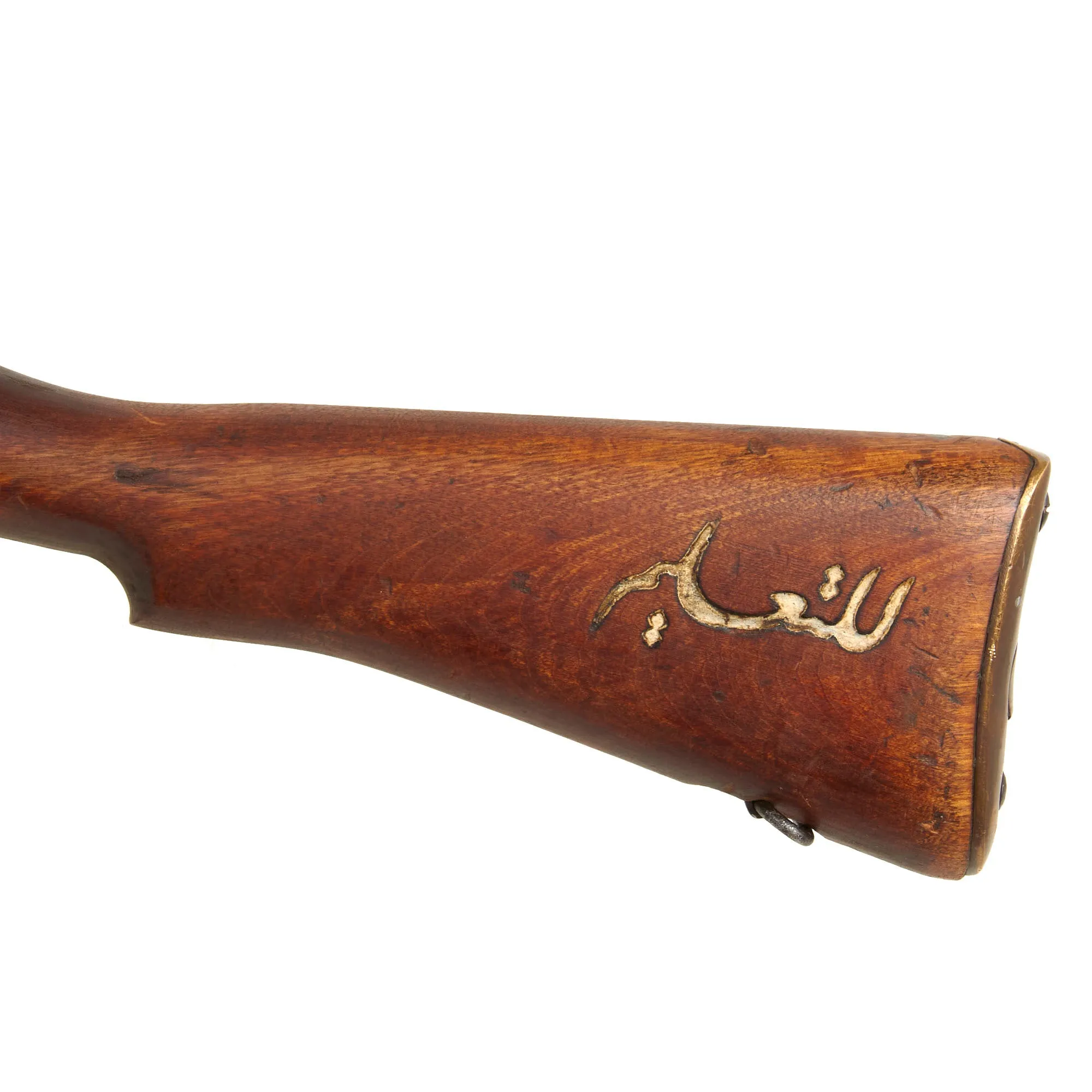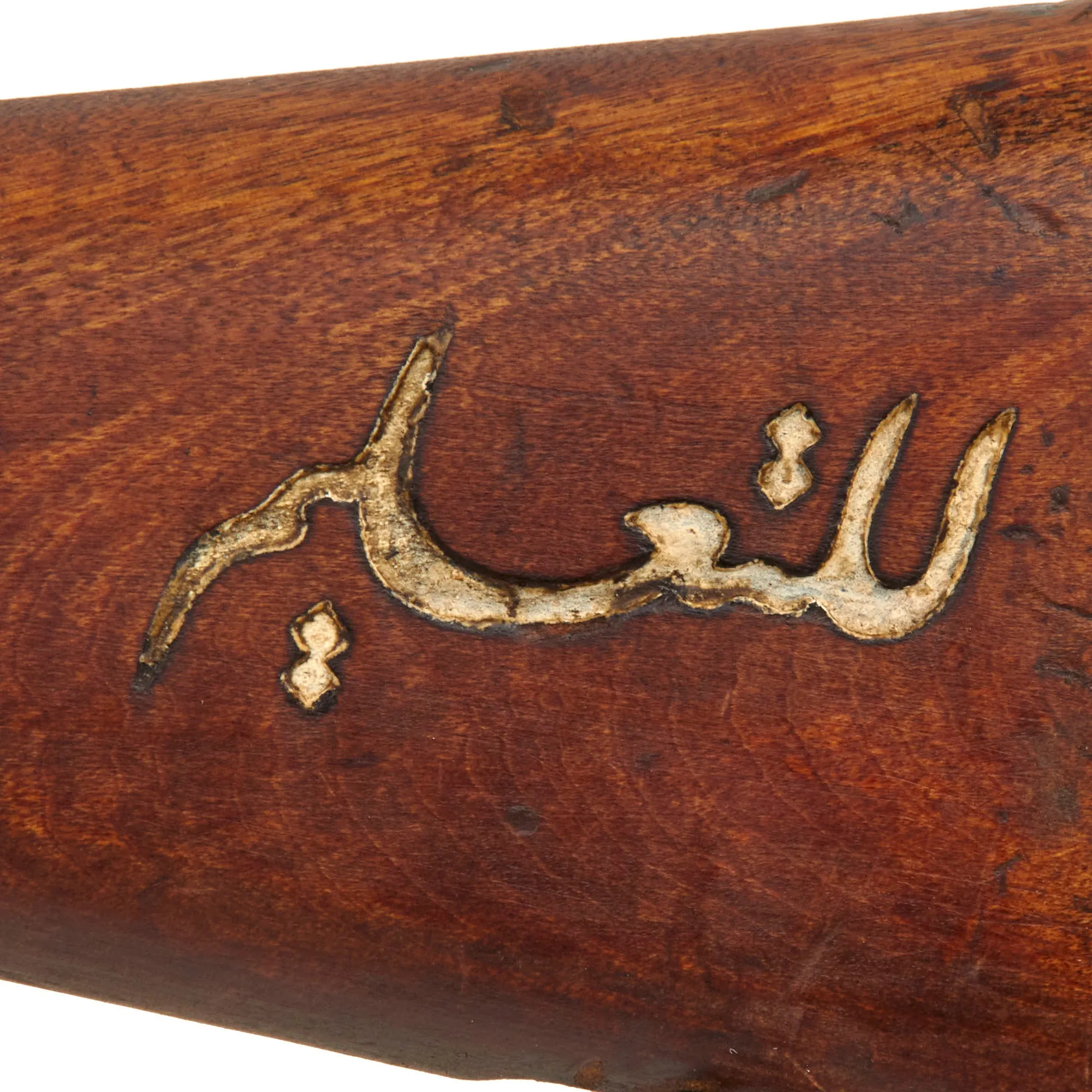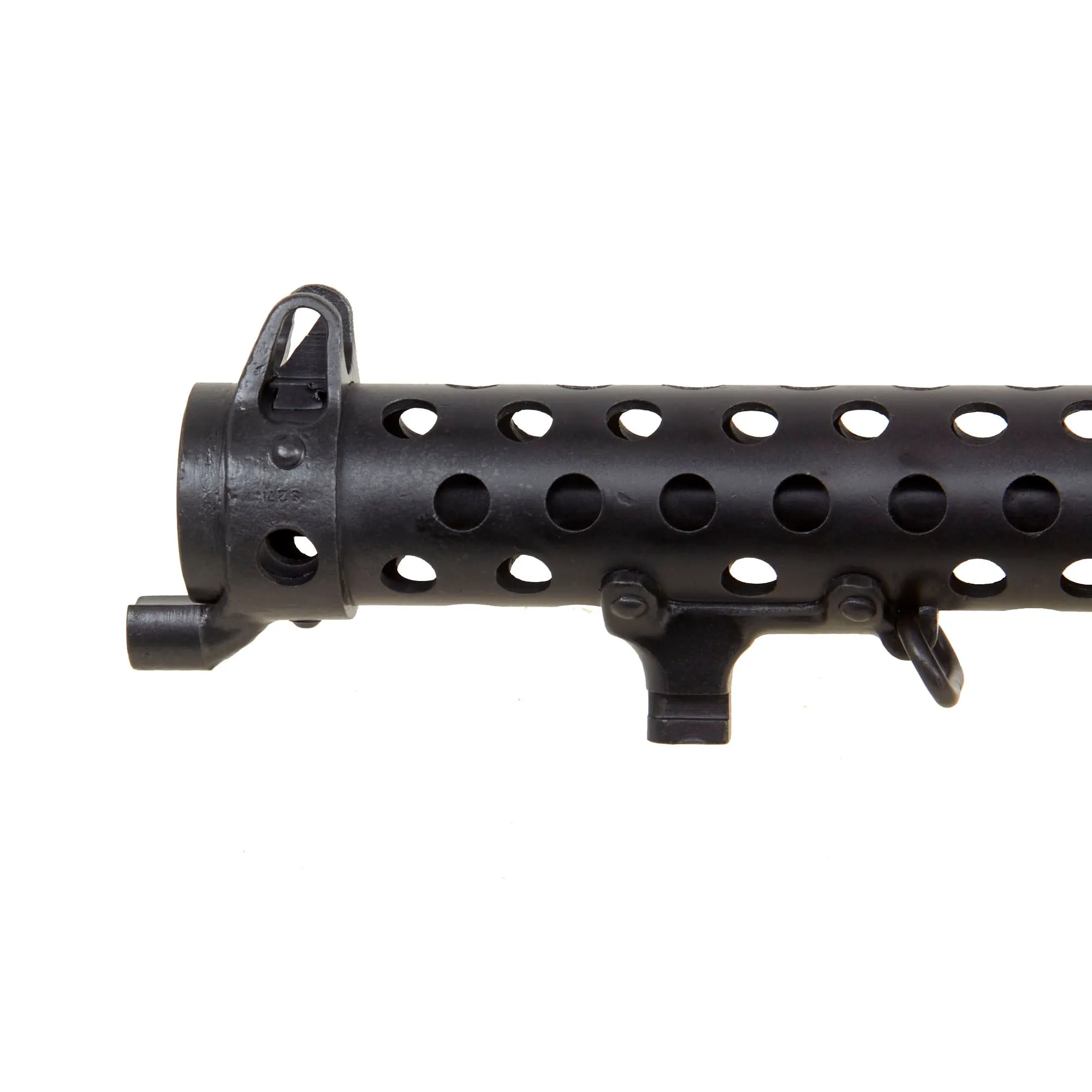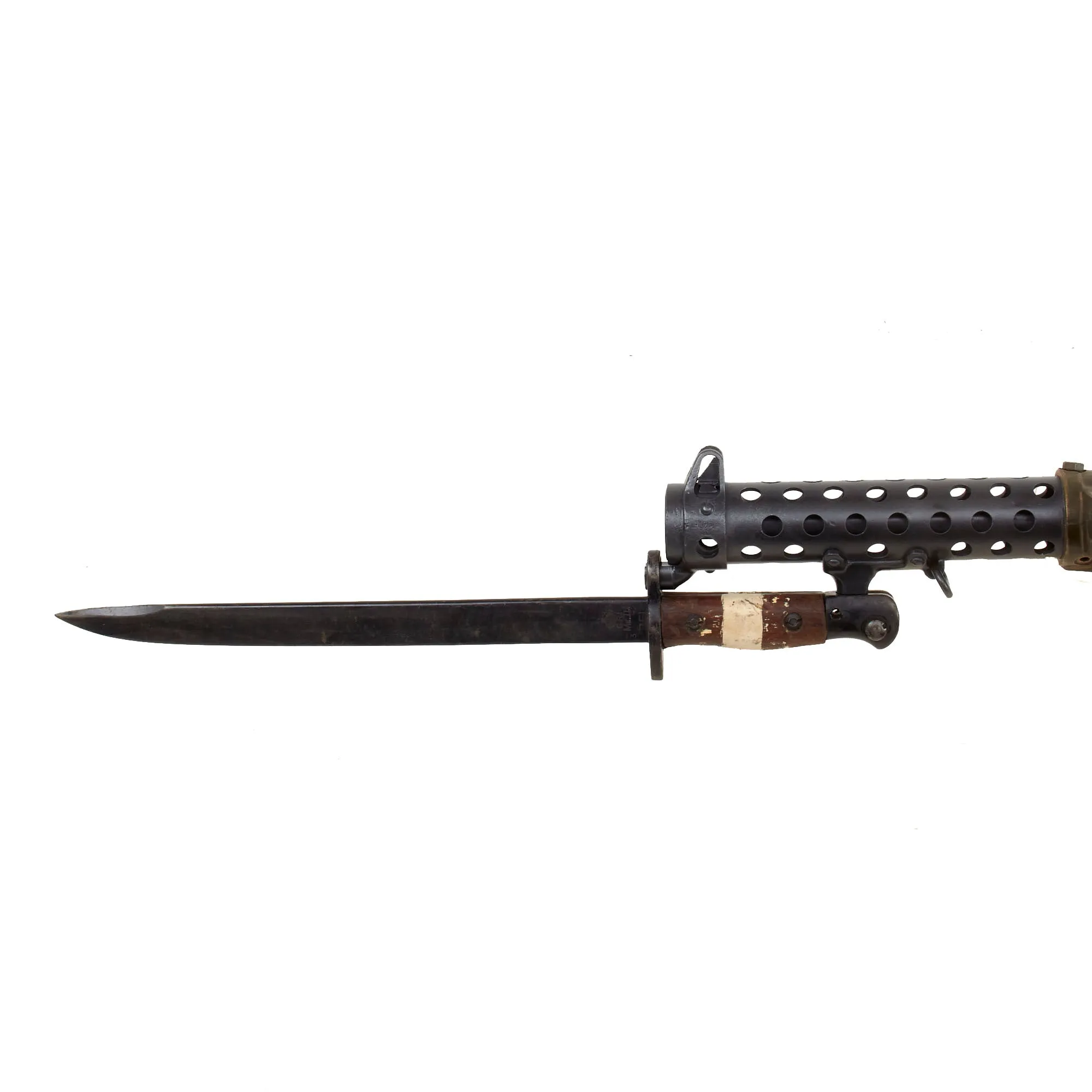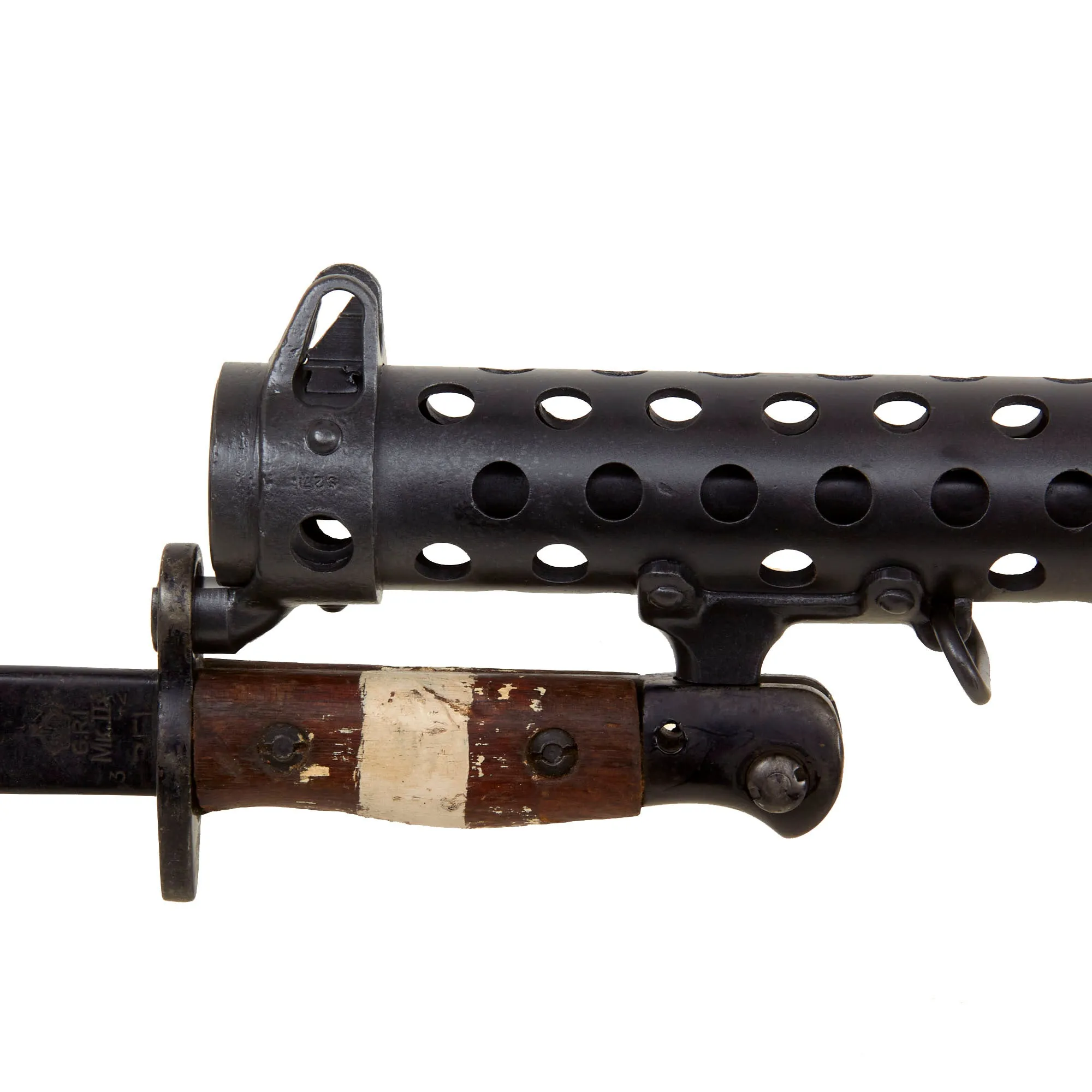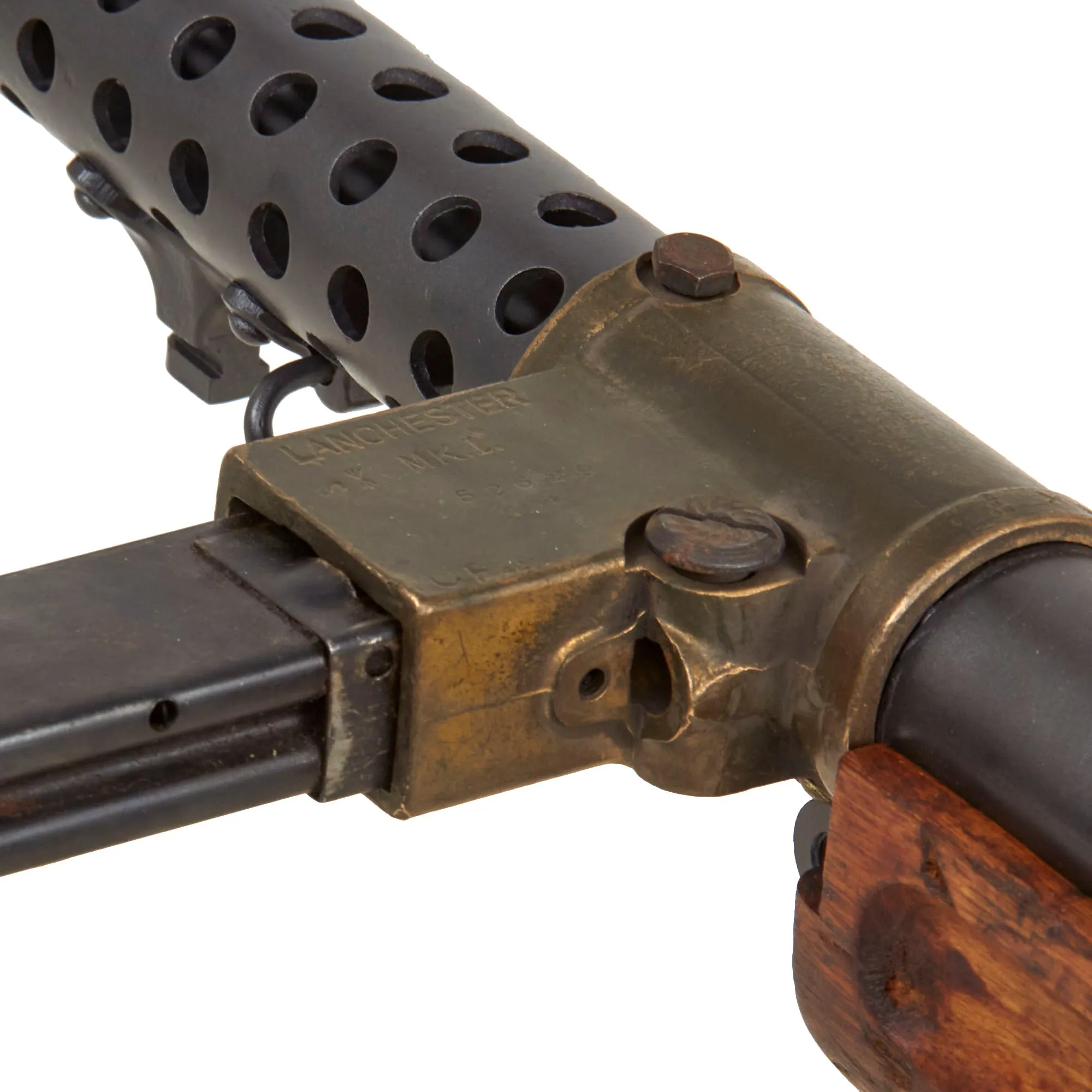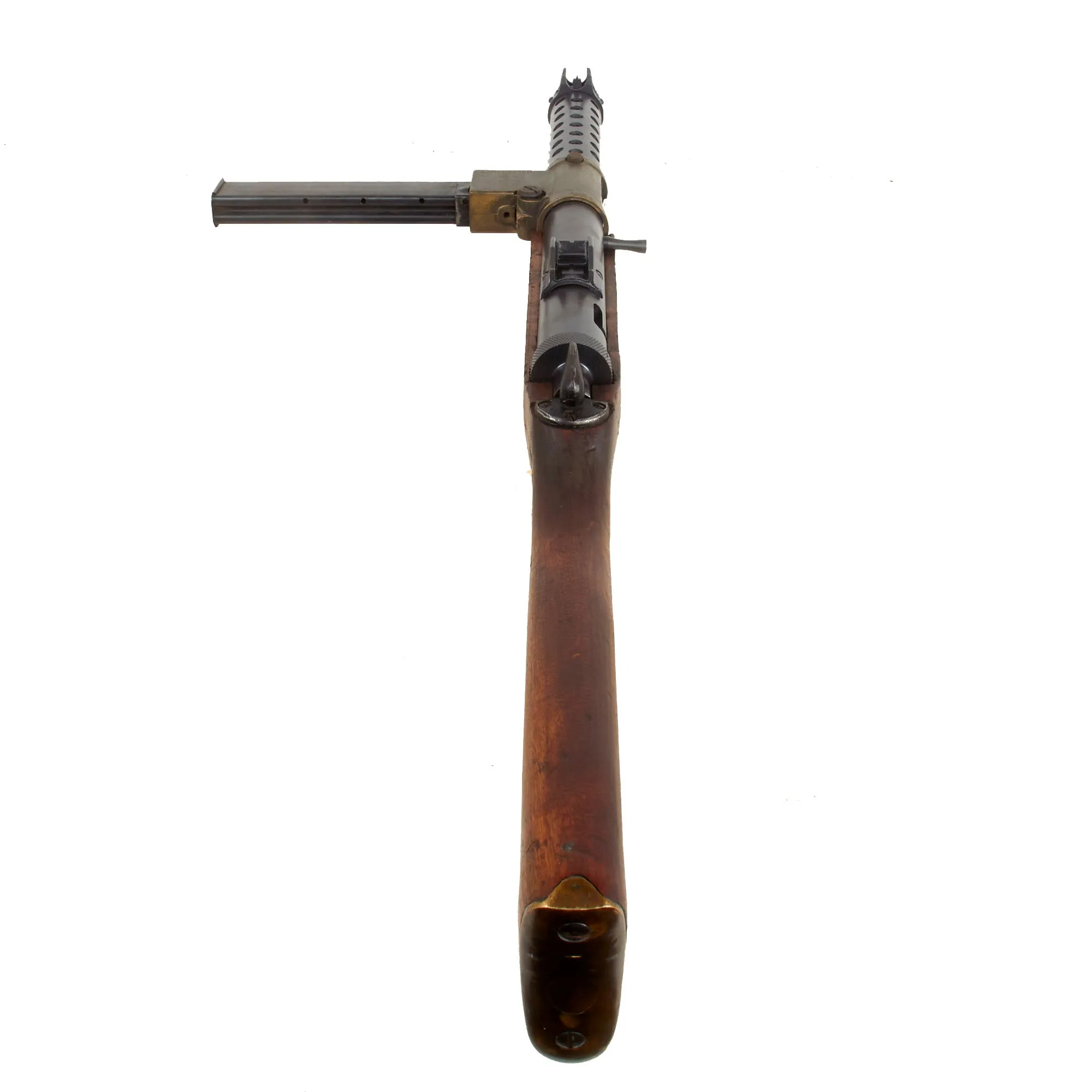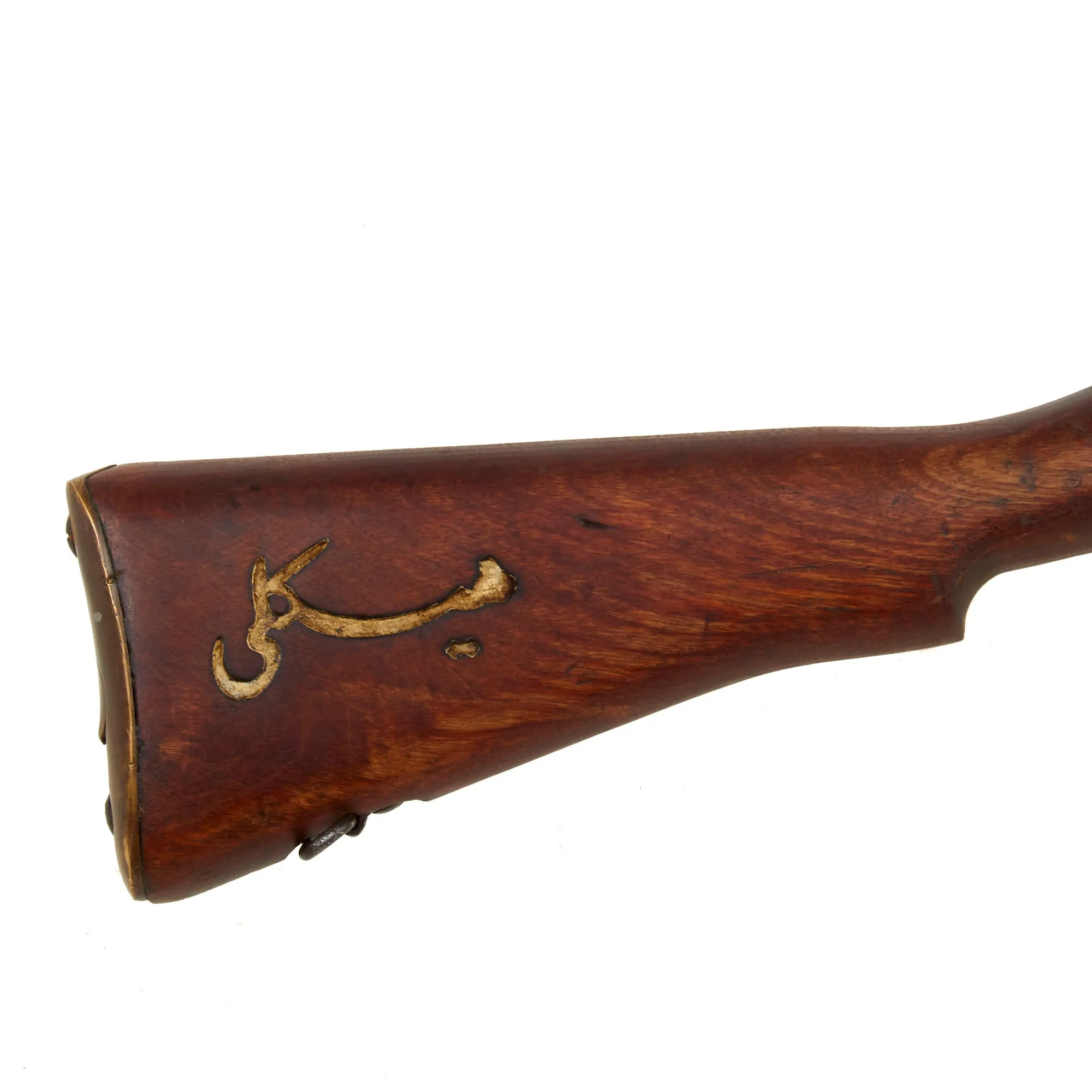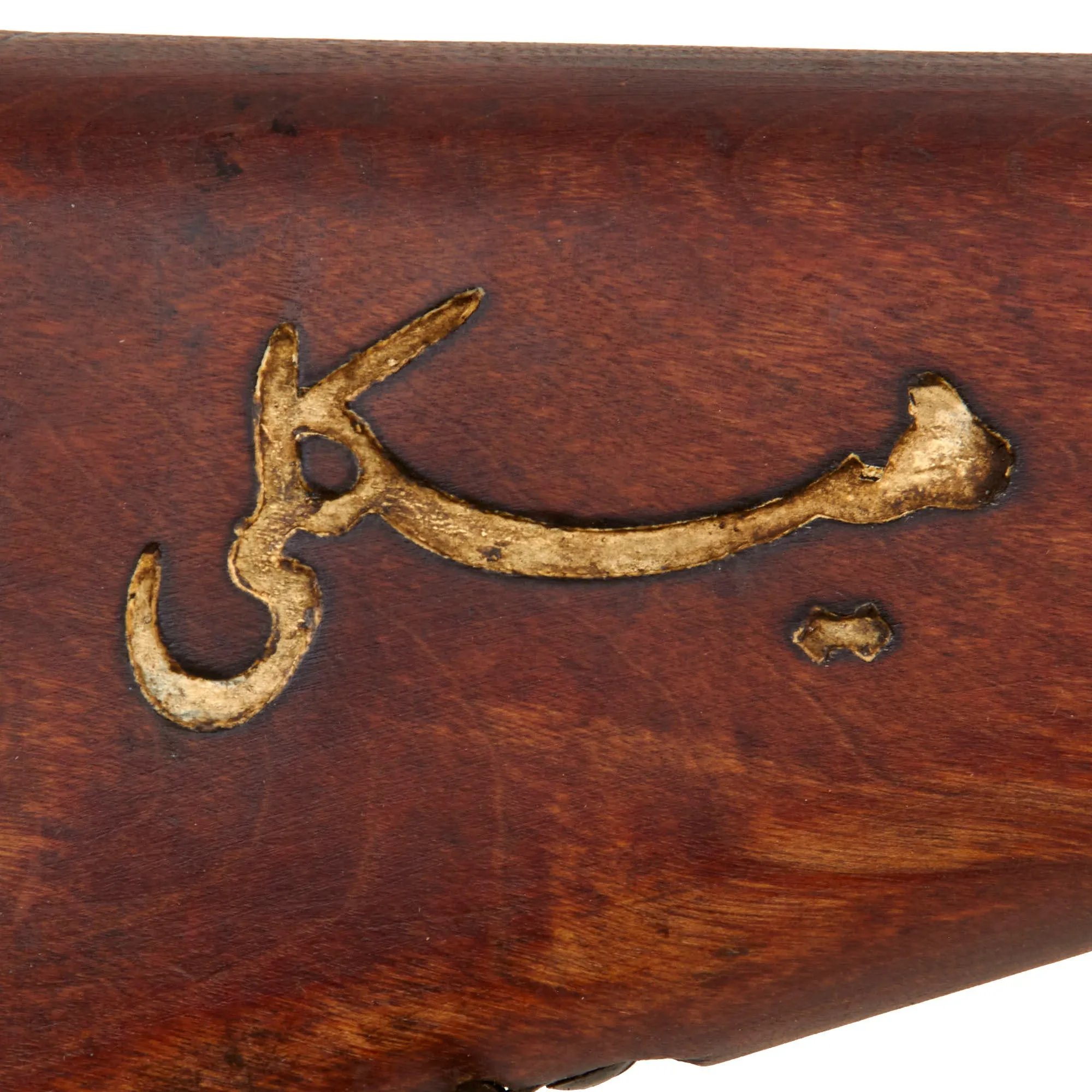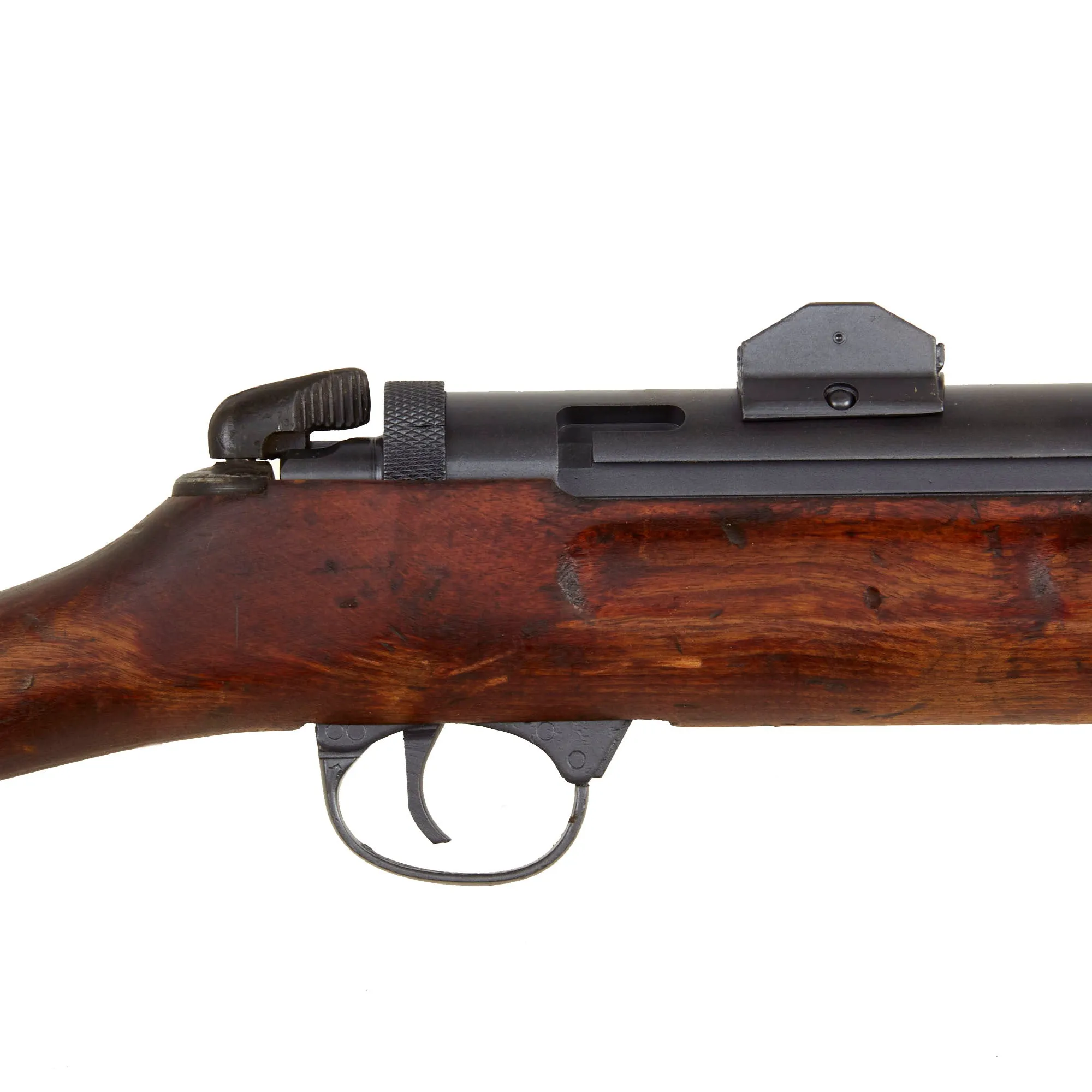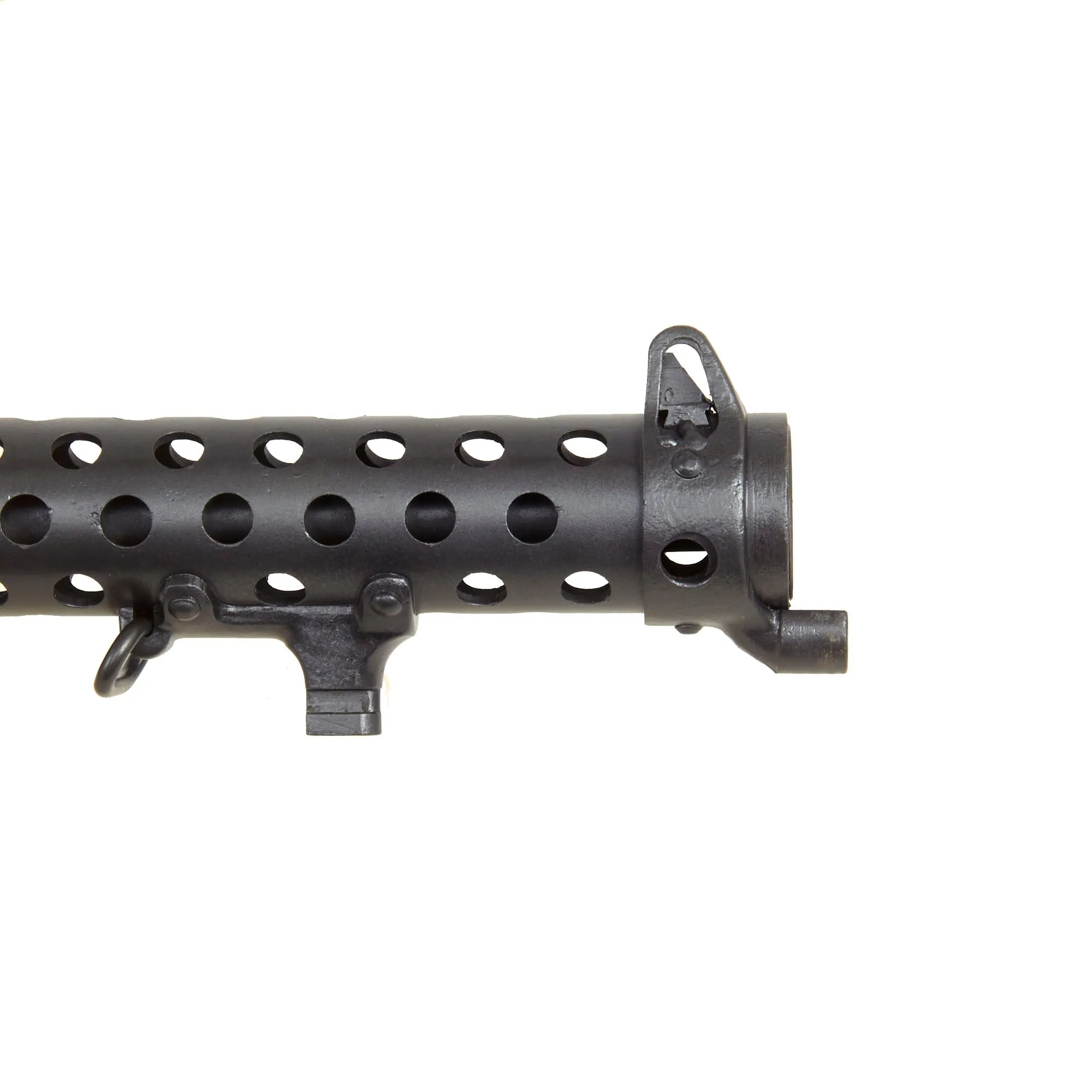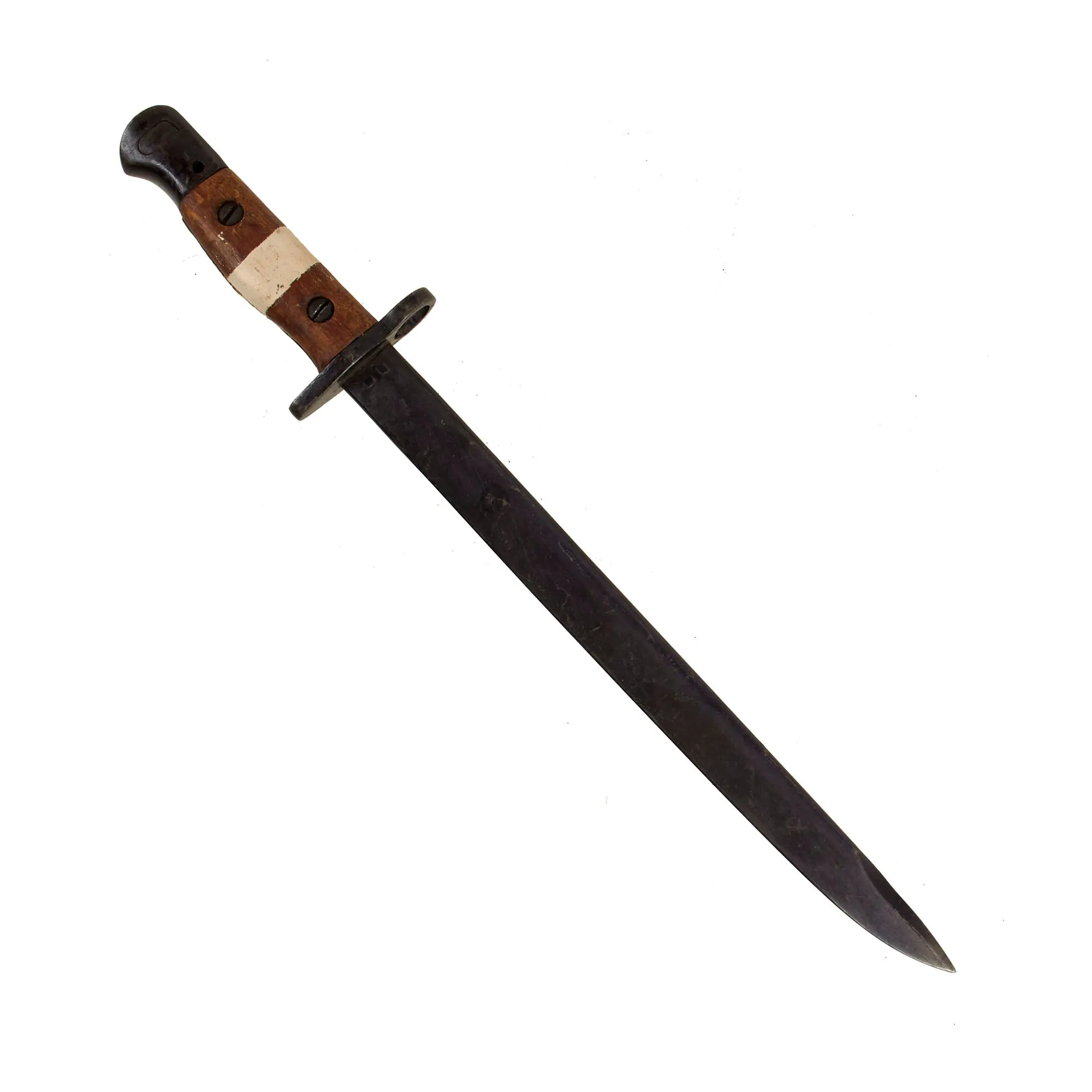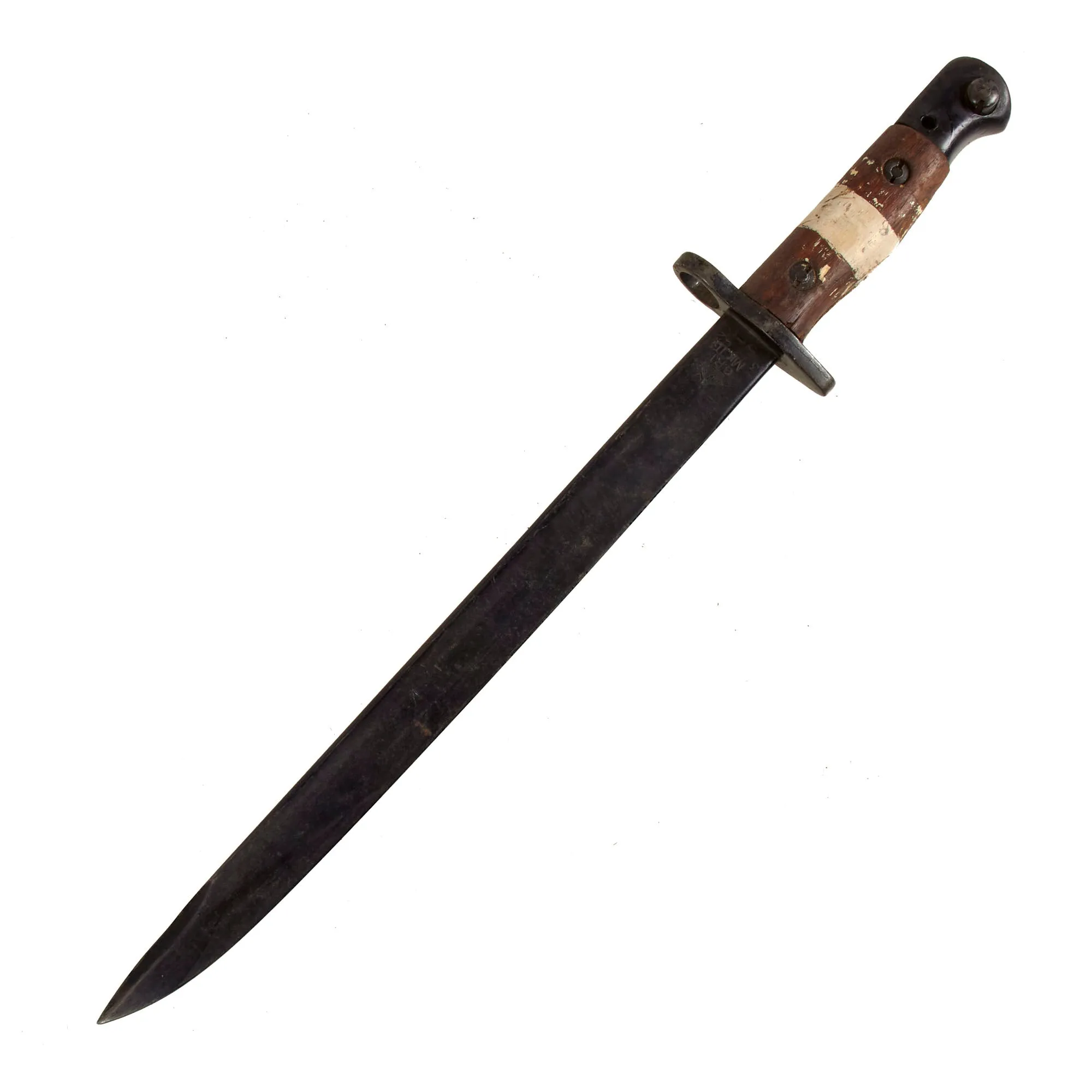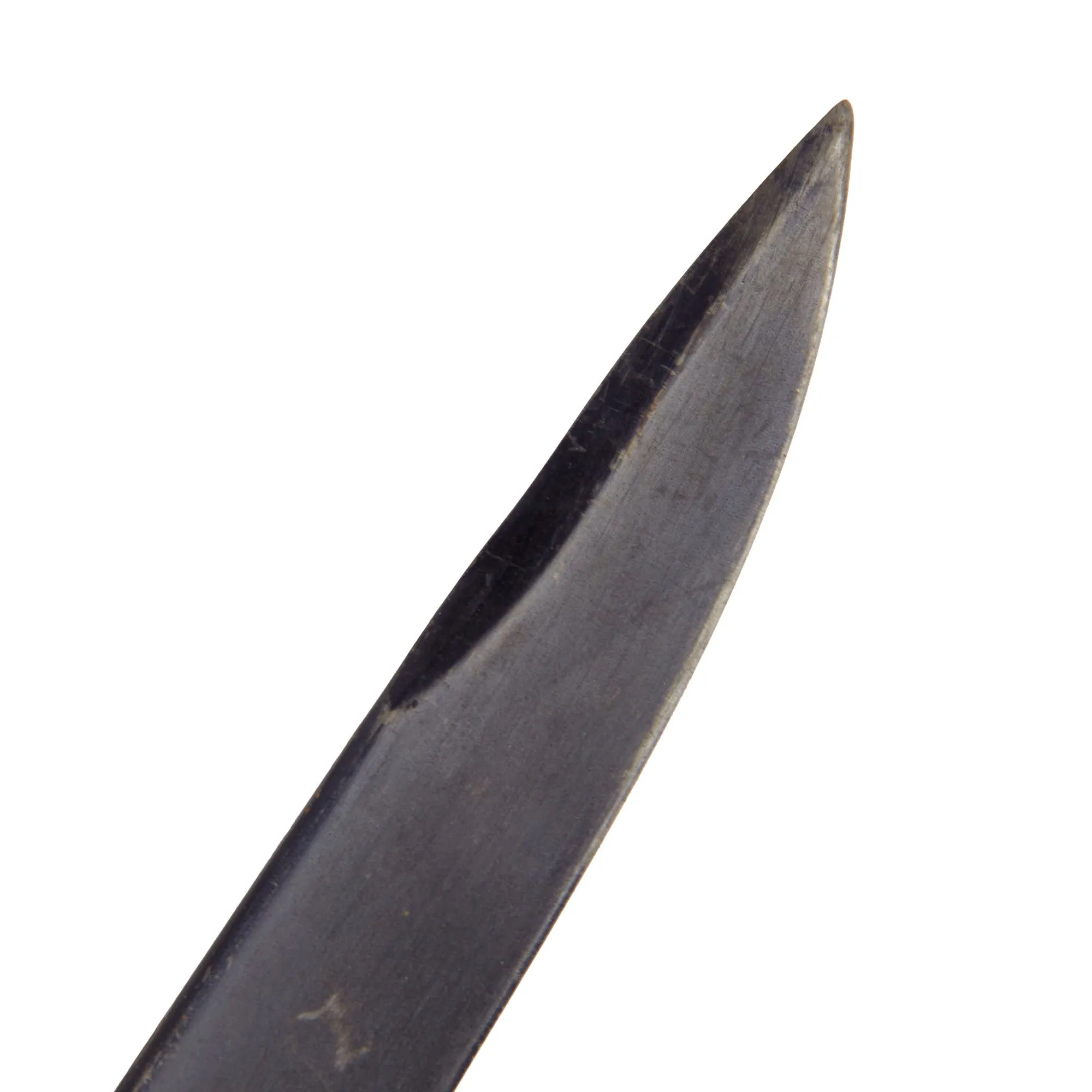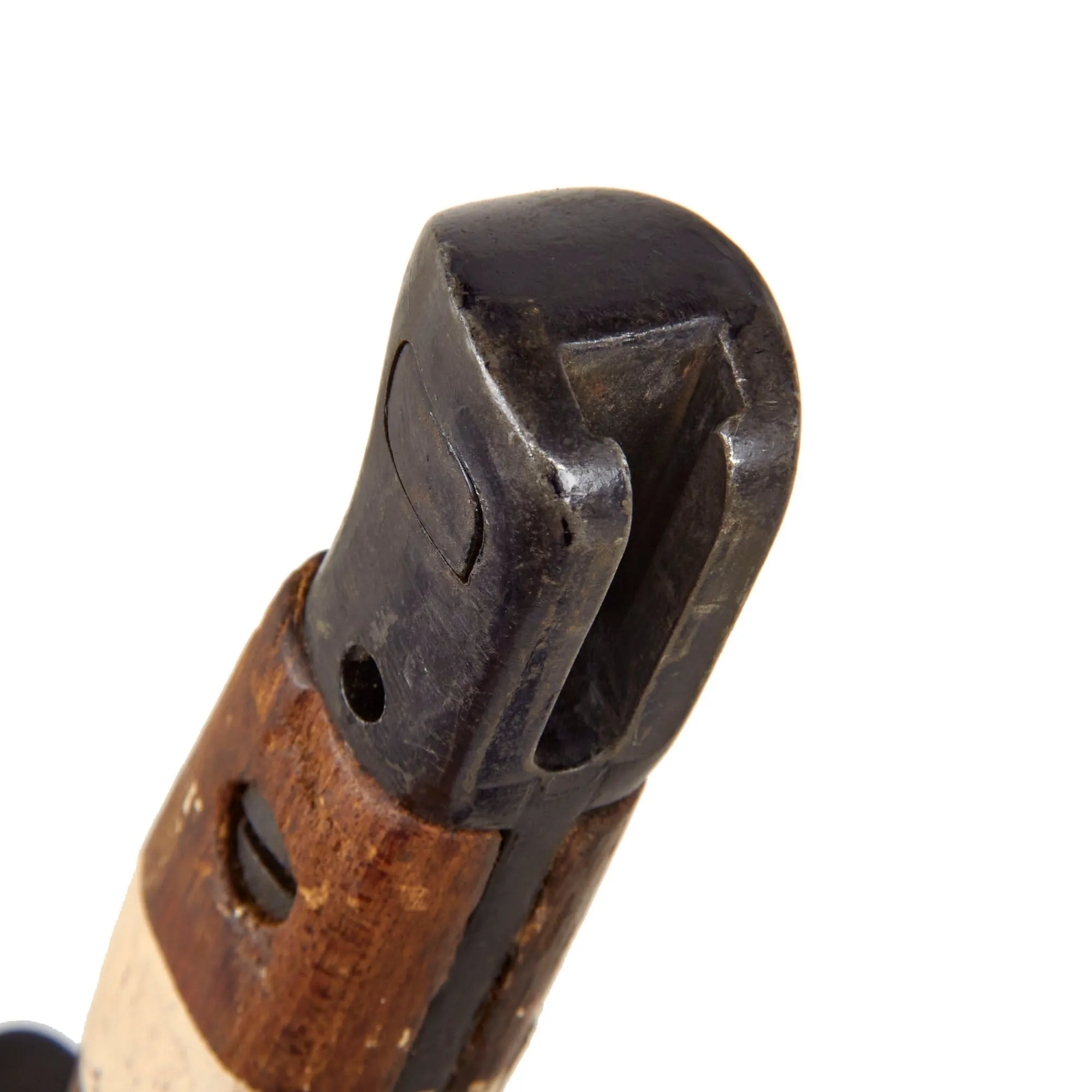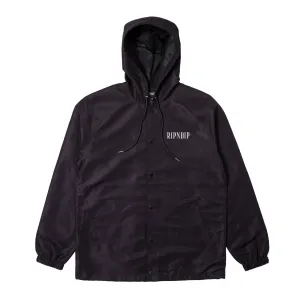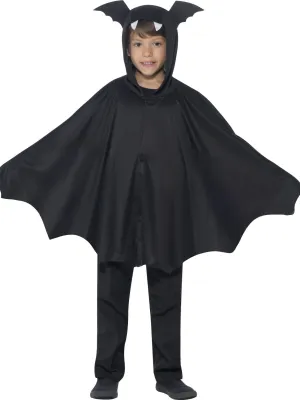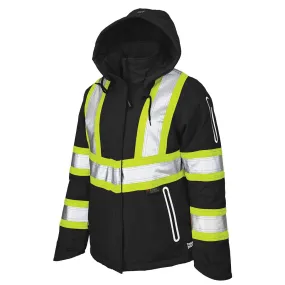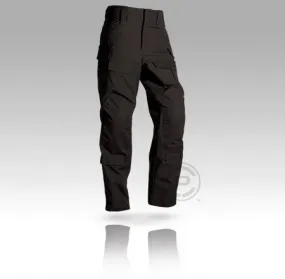Original Item: Only One Available. One of the best quality British SMGs of WWII, the Lanchester has a full wood buttstock with brass butt plate. A heavy bronze magazine housing and ventilated barrel jacket complete with bayonet lug and support. (Takes Enfield 1907, 1943/44 series bayonets)
This lovely example is offered in great condition and is built on a BATF compliant non-firing solid aluminum dummy receiver, which has had the brass magazine well and barrel jacket attached to the front with a dummy barrel. With none of the original receiver included, result is this beautiful display "non-gun", totally legal to own without a license of any kind.
It is nicely marked on the magazine housing with the model and maker information:
LANCHESTER
MK.1.*
52629
M/94
CF 42
The "42" at the bottom looks to be the year of manufacture, and "M/94" is the British dispersal code for the well-known W.W. Greener Company, who were one of the three companies contracted to produce components for the Lanchester SMG.
This example has the correct Mk.I* flip sight, and comes complete with both a 3 42 dated P-1943 MkII* "Jungle" bayonet and a 20 round magazine (deactivated where required). While these did have a 50 round magazine, they proved unwieldy, especially as they stuck out to the side of the gun. The display gun is fitted with a Mk.I* stock, without a cutout for the fire mode selector, which is in very good condition. It features Arabic writing on both sides of the butt stock, indicating possible use in North Africa during WWII or afterwards. There is the expected wear and tear, but it's really in great shape compared to most.
A very nice example, complete with a bayonet and magazine. Ready to display!
Bayonet Specifications:
Blade Length: 12"
Blade Style: Single Edge
Overall length: 16 3/4"
Crossguard: 2 1/2”
The Lanchester is a submachine gun (SMG) manufactured by the Sterling Armaments Company between 1941 and 1945. It is a copy of the German MP28/II and was manufactured in two versions, Mk.1 and Mk.1*; the latter was a simplified version of the original Mk.1, with no fire selector and simplified sights. It was primarily used by the British Royal Navy during the Second World War, and to a lesser extent by the Royal Air Force Regiment (for airfield protection). It was given the general designation of Lanchester after George Herbert Lanchester, who was charged with producing the weapon at the Sterling Armaments Company.
Following the Dunkirk evacuation in 1940, the Royal Air Force decided it required a submachine gun for airfield defence. With no time available for the usual research and development of a new weapon, it was decided to create a direct copy of the German MP 28. The British Admiralty decided to join with the RAF in adopting the new weapon, and played a key role in its design. Ultimately, it was within the Royal Navy that most of the Lanchesters that were produced went into service.
The British copy of the MP28 was given the general designation of Lanchester after George Herbert Lanchester, who was charged with producing the weapon at the Sterling Armaments Company, the same company that later produced the Sterling submachine gun.
The Lanchester was envisioned as a weapon used for guarding prisoners and accompanying naval landing and assault parties. It was a very solid, well-made submachine gun of high-quality materials, in many ways the complete opposite of its direct contemporary, the Sten.
The Lanchester had a heavy wooden butt and stock, a machined-steel action and breech block, a magazine housing made from solid brass[3] (later steel) and a mounting on the muzzle for use of a long-bladed 1907 bayonet. The rifling differed from the German original in details to accommodate various lots of 9mm ammunition then being acquired for service use.
Produced in two versions, Mk.1 and Mk.1*. The Mk.1* was a simplified version of the original Mk.1, which omitted the fire mode selector (full automatic only) and used simplified sights.




